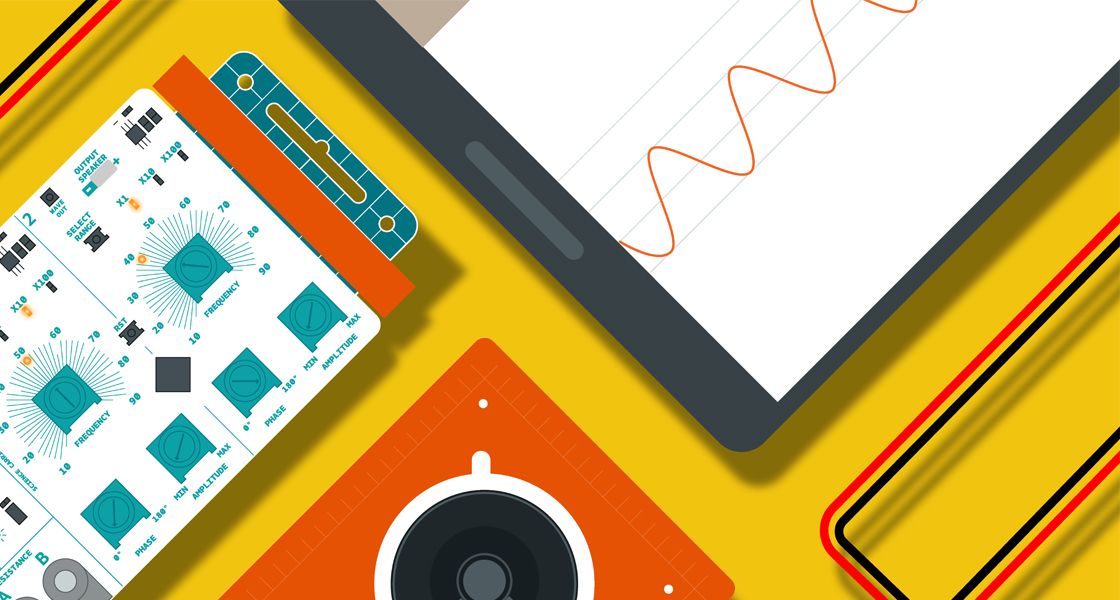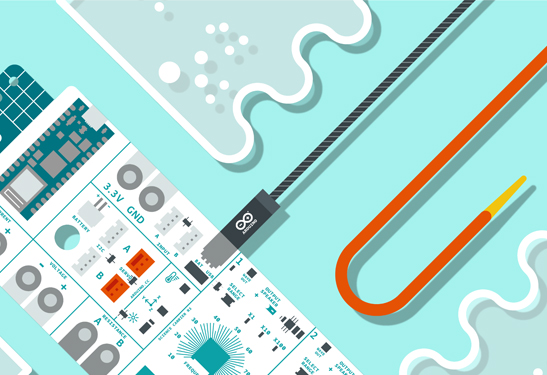Exploring the World of Physics: New Experiments with the Arduino Science Kit

At Arduino Education, we want to continuously expand the horizons of scientific learning for students and educators alike.
Our latest update to the Science Kit R3 introduces exciting new experiments which leverage the kit’s external plug and play sensors.
These new experiments, which use the speakers, the ultrasonic ping-echo time sensor (distance sensor), and the temperature probe are paths to a deeper understanding and exploration in your science classroom.
Why using sensors matters in education
Incorporating sensors into educational kits bridges the gap between theoretical concepts and tangible experiences.
Sensors, like the ones in the Science Kit R3, allow students to interact with real-world phenomena, making abstract concepts like sound waves, distance measurement, and temperature changes more relatable and understandable.
By providing hands-on learning opportunities, students can grasp complex topics more effectively, fostering a deeper engagement with the subject matter.

New experiments and learning outcomes
The five new experiments in the Science Kit R3 learning content are:
- Exploring amplitude and loudness with speakers: Help students understand how sound works by manipulating amplitude to understand its impact on loudness. This experiment not only teaches the principles of sound waves, but also illustrates the practical aspects of how speakers work in everyday devices.
- Frequency and pitch: The second experiment with speakers allows students to explore how varying the sound wave frequency alters pitch. This hands-on activity connects musical notes to scientific principles, making the learning process both educational and entertaining.
- Measuring distance and speed of sound: Using the ultrasonic sensor, students can measure the time it takes for a sound wave to hit an object and return, helping them understand the relationship between distance and sound speed in air. This experiment sharpens their measurement skills and introduces them to the concept of sound waves traveling through different mediums.
- Observing phase changes with the temperature probe: In this engaging experiment, students monitor the temperature of a liquid as it transitions into a solid, providing a hands-on approach to learning about phase changes, heat transfer, and the properties of matter.
- Heat capacity exploration with the temperature probe: By adding a hot metal block to cold water, students explore the concept of heat capacity. This experiment demonstrates energy transfer while encouraging students to think critically about how different materials interact with heat.
Empower the future scientists in your classroom
Each of these experiments has been carefully designed to align with educational standards, ensuring that students meet learning objectives and also develop essential critical thinking and problem-solving skills. By integrating these experiments into the curriculum, educators can provide students with a more engaging and comprehensive science education.
Buy the Science Kit R3 today, stay tuned for more updates, and happy experimenting!